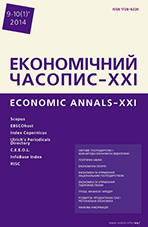CONTEMPORARY WELFARE STATES AND STUDENT ACHIEVEMENTS
CONTEMPORARY WELFARE STATES AND STUDENT ACHIEVEMENTS
Author(s): Jan Šlajs, Felix Höschle, Wadim StrielkowskiSubject(s): Economy
Published by: Institute of Society Transformation
Keywords: welfare state; student achievements; WWII; instrument variables; multiple regression; econometric modeling
Summary/Abstract: Our paper estimates the effect of social welfare on student achievements that are measured by the Programme for International Student Assessment (PISA) scores which test students across countries for skills in mathematics, problem-solving, and a few other subjects. Higher student achievements mean that secondary school pupils of one country are doing better in these tests than pupils from other countries. We employ the extent of destruction of European economies during the Second World War (WWII) as an instrument for assessing the scope of the social welfare state. WWII caused a large numbers of orphans, widows, and people in need. The resulting atmosphere of solidarity caused unanimous agreements on expanding the welfare state. The authors’ contribution to the development of the problem consists of using new instruments and measures of the social welfare state in European countries. We use econometric modelling that involves instrument variable approach and multiple regressions to establish the determinants of the contemporary welfare state. Our results demonstrate that a country badly struck by the war yielded a higher level of the acceptance and solidarity with the victims. Our identification strategy exploits the resulting correlation between the extent of the social welfare state and the destruction during the WWII and finds significantly positive effects of the extent of the welfare state on student achievements.
Journal: Економічний часопис - ХХІ
- Issue Year: 144/2014
- Issue No: 09+10 (1)
- Page Range: 26-29
- Page Count: 4
- Language: English

